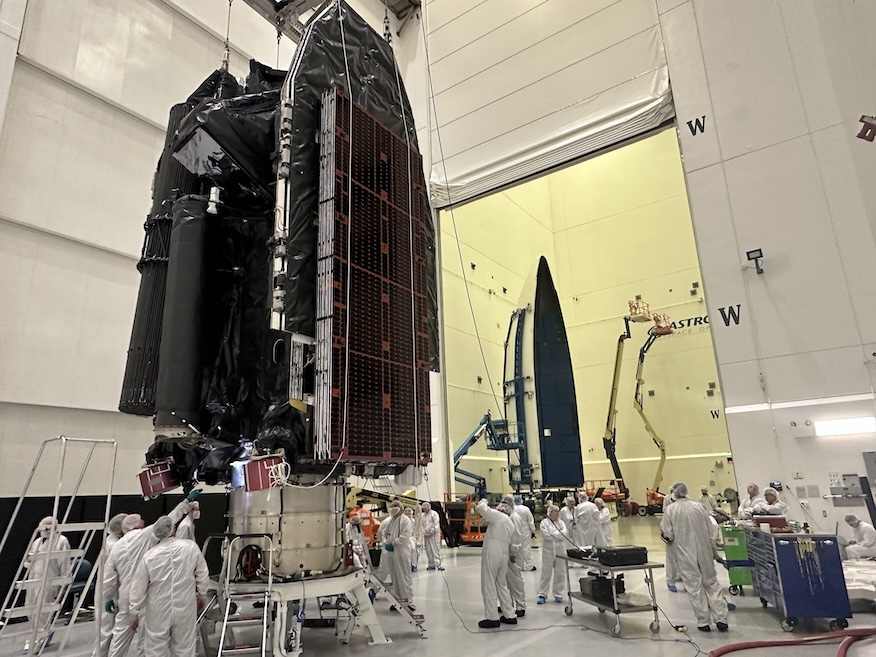
Update Nov. 6, 9:10 p.m. EST (0210 UTC): ULA scrubbed the launch and will target a new, yet to be announced, launch date.
United Launch Alliance halted its Atlas 5 countdown for a second night in a row, scrubbing the launch of the ViaSat-3 F2 satellite. Liftoff from pad 41 at Cape Canaveral Space Force Station was scheduled for 10:16 p.m. EST (0316 UTC), but the valve issue that prevented a launch Wednesday night remained persistent on Thursday.
Launch Director James Whelan scrubbed a launch attempt Wednesday night when a vent valve on the Atlas 5’s first stage liquid oxygen tank failed to work properly during final pre-launch checkouts. A little more than an hour before the Thursday night window opened, ULA said it was foregoing the launch attempt.
“The launch of a United Launch Alliance Atlas 5 carrying the ViaSat-3 F2 mission for Viasat is scrubbed for tonight’s launch attempt due to a reoccurrence of the issue with the Atlas 5 booster liquid oxygen tank vent valve,” the company wrote. “The team will evaluate the hardware, and we will release a new launch date when available.”
At ULA’s Advanced Spaceflight Operations Center (ASOC), four miles south of the launch pad, launch controllers started the countdown for Thursday’s attempt shortly before 3 p.m. EST. The liquid oxygen tank on the Centaur upper stage reached flight levels and liquid oxygen loading on the booster was underway when the scrub was called shortly after 9 p.m. EST.
Skies at Cape Canaveral were also overcast Thursday afternoon, with thick clouds and rain showers in the area. Launch Weather Officer Brian Belson from the 45th Weather Squadron at the Space Force’s Space Launch Delta 45 downgraded the outlook for launch, giving 50-50 odds of meeting the launch weather rules, with thick-layered clouds and rain being the primary concerns.
Nestled inside the rocket’s 5.4-meter diameter payload fairing is the 6-metric-ton ViaSat-3 F2 satellite, manufactured by Boeing. When the mission is ready to launch, the Atlas 5’s hydrogen-fueled Centaur upper stage will fire three times and use the great majority of its propellant to send the satellite on its way into a geostationary transfer orbit. This so-called Minimum Residual Shutdown will impart maximum velocity on the satellite once it is deployed 3.5 hours into flight, potentially extending its lifetime.

This is the second satellite in the ViaSat-3 series. It follows the launch of the first spacecraft by a SpaceX Falcon Heavy rocket in 2023. That satellite, ViaSat-3 F1, suffered an issue with its antenna, which both delayed the start of service and resulted in a reduced capacity.
Viasat officials said this new satellite will provide Ka-band network capabilities, adding more than 1 terabit per second (Tbps) of capacity to the company’s network over the Americas.
Following months of on-orbit testing at its operating location of 79 degrees West longitude, the ViaSat-3 F2 spacecraft is expected to enter service in early 2026.

